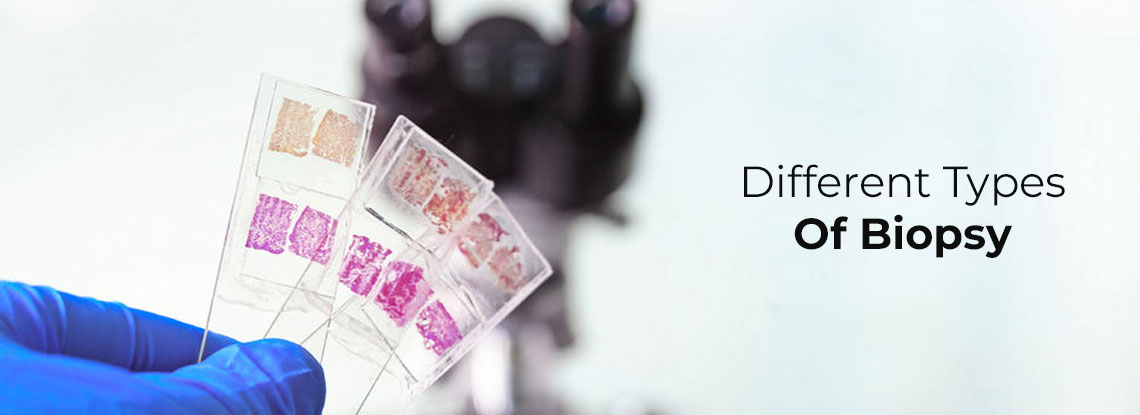Getting Familiar With Different Types Of Biopsy
- November 23, 2021
- 12 Comments
- Biopsy,cancer
oncology treatment hospitals in Pune, a biopsy can be performed on a lesion, tumour or mass. While these are mostly performed to confirm a suspected case of cancer, these can also be done for the identification of various other conditions. A biopsy may be recommended in any of the following cases:
- If your mammogram reports indicate the possibility of breast cancer
- If you have an irregularly shaped mole on your skin
- If you have a mass or lump in any part of the body
Though these are the major indications of biopsy, these are not the only indications. A biopsy may also be performed on tissues that appear to be normal so as to check for metastasis of the malignancy or rejection in case of an organ transplant. Biopsy not only helps to diagnose the problem but also helps to figure out a proper treatment plan that would yield the best results.
Based on the type of technique involved, biopsies are classified in the following subtypes:
1. Bone marrow biopsy – As per the experts specializing in oncology treatment in Mumbai, bone marrow biopsy is recommended if there is an abnormality in your blood or if your doctors suspect that malignancy has originated in your bone marrow or metastasized to it. Bone marrow refers to the brown spongy substance present within the bones, which is responsible for the production of the blood cells.
It is pertinent to note that bone marrow biopsies can help to diagnose a plethora of blood-related ailments, both cancerous and benign. The procedure can be used in the diagnosis of blood cancers, such as leukaemia, lymphoma and multiple myeloma.
The sample is collected from the patient’s hip bone with the help of a long needle, while he/she is under the influence of anaesthesia.
2. Endoscopic biopsy – As the name suggests, the sample is collected with the help of an endoscope and involves the use of special surgical tools. The type of endoscopic technique involved depends upon the area in which the abnormality is suspected. As such, the tube may be inserted via the patient’s mouth, rectum, and urinary tract or by making a small incision in the skin. Some common examples of endoscopic biopsy include cystoscopy and bronchoscopy.
3. Needle biopsy – This involves the use of a very fine needle to collect a tissue sample from the suspected area. Offered at all the best medical oncology hospitals in Pune, the procedure is usually done on growths and tumours that can be felt through the skin, such as lumps on the breasts, enlarged lymph nodes, etc. this can be done in a number of ways:
- Fine needle aspiration, in which a fine needle is directly injected into the suspected area and the suspected fluid and cells are collected with the help of the syringe.
- Core needle biopsy is done using a cutting tip to draw a column of tissue from the concerned area.
- Vacuum-assisted biopsy uses a suction technique to increase the number of cells and fluids that are extracted with the help of a needle. This can help to get enough samples in a few tries.
- Image-guided biopsy uses imaging modalities to guide the procedure. This is done when the lump cannot be felt at a touch. Use of real-time images helps to add to the accuracy and precision of the procedure.
4. Cutaneous biopsy – Commonly referred to as skin biopsy, it involves the collection of a sample of skin from your body’s surface. The type of biopsy varies depending upon the type of technique involved.
- Shave biopsy uses a razor to scrape off the skin sample
- Punch biopsy to remove a deeper section of skin
- Incisional biopsy, which involves the use of a scalpel to collect the sample by making a proper incision
- An excisional biopsy involves the extraction of the entire lump or mass.








Leave Comment